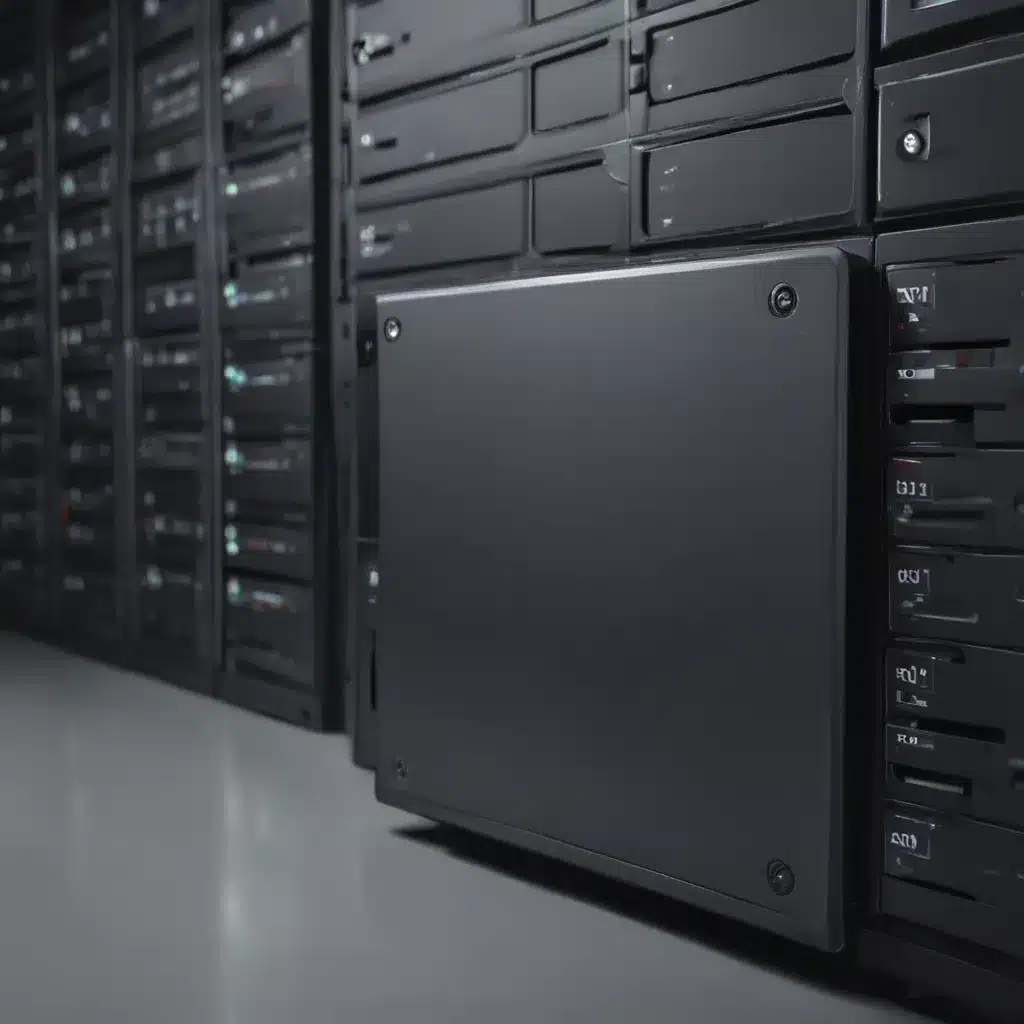The Perilous Pitfalls of RAID Reliance
I’ll admit it – I used to be a RAID fanatic. Like many tech-savvy folks, I thought that RAID was the ultimate storage solution. After all, it promised redundancy, speed, and reliability. What could go wrong, right? Oh boy, was I in for a rude awakening.
It all started a few years back when I decided to build out my home media server. I scoured the internet, reading glowing reviews of various RAID setups. Synology this, Drobo that – the promises were endless. “Never worry about drive failure again!” they said. “Bulletproof data protection!” they boasted. Excited by visions of my data being safe and sound, I pulled the trigger and invested in a shiny new 4-bay Synology NAS.
The Fateful Day of Reckoning
Fast forward a couple years, and I’m happily chugging along, storing all my precious photos, videos, and documents on my trusty RAID array. Life is good, or so I thought. One day, I get a frantic call from my partner – the NAS isn’t responding! After some troubleshooting, the devastating news hits me like a ton of bricks: the RAID had failed, and all my data was inaccessible.
Panic sets in as I try frantically to recover the files. I spend hours on the phone with Synology support, only to be told that the data was essentially gone. Apparently, a perfect storm of events – a power surge, a firmware update gone wrong, and some bit rot – had conspired to destroy my precious RAID. [1] It was a humbling and terrifying experience, and it made me realize that my data was far from secure.
The Harsh Realization: RAID is Not a Backup
As I sat there, staring at the lifeless NAS, I couldn’t help but reflect on the countless times I had scoffed at the “RAID is not a backup” mantra. I had always thought, “Well, if one drive fails, the others will just pick up the slack. What could go wrong?” [2] Boy, was I wrong.
The harsh reality is that RAID, no matter how well-configured, is not a substitute for a robust backup strategy. While it can provide some protection against individual drive failures, it offers zero safeguards against user error, software bugs, ransomware, or catastrophic events like fires or floods. [3] If someone in my household had accidentally deleted a crucial file, or if a virus had encrypted the entire array, the RAID would have been utterly useless.
Backup: The Unsung Hero of Data Protection
It was in that moment of despair that I realized the true value of a proper backup solution. Backup isn’t just some optional extra – it’s the unsung hero of data protection. Unlike RAID, which only protects against hardware failures, a good backup strategy can shield your data from a wide range of threats, from user mistakes to natural disasters. [4]
I started researching backup options, and the more I learned, the more I realized how woefully inadequate my previous setup had been. Sure, I had been dutifully running Time Machine on my MacBook, but that was just scratching the surface. What about my irreplaceable family photos and videos? What about my important business documents? I needed a comprehensive, multilayered backup plan.
Building a Bulletproof Backup Strategy
After much research and soul-searching, I devised a backup strategy that I like to call the “Triple Threat.” It goes a little something like this:
-
On-Site Backup: I have a pair of high-capacity, mirrored external hard drives that I use for regular, incremental backups of my data. These drives live right next to my computer, so I can quickly restore files if needed.
-
Off-Site Backup: In addition to my on-site backups, I also have a set of drives that I rotate out and store in a secure location, like a safety deposit box. This ensures that even if disaster strikes my home, I’ll still have a copy of my data safely stashed away.
-
Cloud Backup: To cover all my bases, I also subscribe to a reputable cloud backup service. This allows me to securely store my most important files off-site, with the added benefit of being able to access them from anywhere.
By layering these different backup methods, I’ve created a robust, redundant system that gives me peace of mind. If one backup method fails, I’ve got two others to fall back on. And if disaster strikes my home, I know that my data is still safe and sound, waiting to be restored.
The Backup Trifecta: Redundancy, Resiliency, and Recovery
The beauty of this multi-pronged approach is that it addresses the key weaknesses of RAID. While RAID may protect against individual drive failures, it’s powerless against user error, software bugs, and natural disasters. [5] My backup strategy, on the other hand, provides redundancy, resiliency, and the ability to recover from almost any data loss scenario.
Sure, it takes a bit more time and effort to maintain, but the peace of mind is priceless. No more frantic calls from my partner, no more sleepless nights worrying about the fate of my data. I know that my information is safe, secure, and ready to be restored at a moment’s notice.
So, if you’re like me and have been relying on RAID as your primary data protection solution, heed my cautionary tale. RAID is not enough – you need a comprehensive backup strategy to truly safeguard your most precious digital assets. Trust me, your future self will thank you.
References:
[1] https://www.petemarovichimages.com/never-use-a-raid-as-your-backup-system/
[2] https://www.reddit.com/r/storage/comments/hflzkm/raid_is_not_a_backup_so_what_is/
[3] https://serverfault.com/questions/2888/why-is-raid-not-a-backup
[4] https://community.synology.com/enu/forum/17/post/99633
[5] https://serverfault.com/questions/580816/do-snapshots-raid-count-as-a-good-on-site-backup-solution













